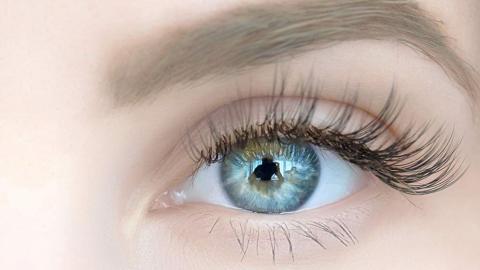Is There a Serum to Thicken My Eyelashes?

There are several serums on the market currently, with ingredients that have been studied, developed and clinically proved to deliver promising results. But there is no “magic wand” as all claim that results may vary. Read: if it didn't work for you, we are not to blame. Money back guarantee is normally offered as a pacifier, since the full effect is usually claimed way past the initial offer. The claims of 2-4 weeks results are usually fake due to the hair growth cycle which lasts around 100 days.
Multitude of choices, though, can be overwhelming. Your best option is to look past the pretty packaging, promotional buzz and rumors. Have a glance on the back label with the list of ingredients.
As a rule the first will be water, then the fun begins. Marketed with exotic plant extracts (stinging nettle, green tea, peppermint, etc.), vitamins (Biotin, Niacin, Tocopheryl Acetate, etc), minerals (silica, sulfur, etc.), stem cells (ginseng, apple), peptides, and conditioning agents which may sound great in theory, these products have no clinically proven, double-blind test results published.
In more expensive ones you’ll find some kind of specific cell “stimulus” - peptides, short chains of amino acids. If a molecule consists of 2-50 amino acids it is called a peptide, a larger chain is referred to as a protein. Myristoyl Pentapeptide-17 and Hexapeptide-16 are peptides supporting the natural levels of keratin – hair protein.
Conditioning agents are pulling the most weight, literally and figuratively. Glycerin, fats and oils (almond, coconut, avocado oils, squalane, Caprylic/Capric Triglyceride, etc) mixed and applied on hair will give you an immediate visual effect of darker (like wet), glossier (looks healthier) and more prominent lashes. They increase protection, add shine and reduce breakage potential. There is always at least one other ingredient (may be more) to mix water and oils together – a solvent (1,3-propanediol or similar).
And remember the preservatives – they are necessary to keep the bacteria at bay after you open the bottle!
Standing out of the crowd are a couple ingredients — Bimatoprost (a structural analog of prostaglandin F2α) and its “relative” Methylamido-Dihydro-Noralfaprostal (MDN), which is another, “gentler” prostaglandin analogue.
Bimatoprost Ophthalmic Solution started out as a medicine to control pressure in the eyes of glaucoma patients. It is available as a 0.03% (0.3mg/mL) strength and is a regulated drug, approved by FDA, to treat inadequate eyelashes (hypotrichosis). Latisse (brand name) can only be obtained with a doctor’s prescription and is not covered by insurance.
MDN is less problematic to obtain and less expensive.
With regular applications along the lash line, prostaglandin analogues gradually encourage growth of longer, thicker and darker eyelashes. For full results, the medication must be used daily for at least two months.
Eyelash improvements remain as long as you continue to use the medication since it doesn’t accumulate. When you stop using Bimatoprost or MDN, your eyelashes will eventually return to their original appearance.
Potential side effects of prostaglandin analogues include:
- Redness of the thin tissue over the white part of the eye (conjunctiva)
- Itchy, red eyes
- Dry eyes
- Darkened eyelids
- Darkened brown pigmentation in the colored part of the eye (iris)
Although darkened eyelids might fade when the medication is stopped, any changes in iris color are likely to be permanent.


